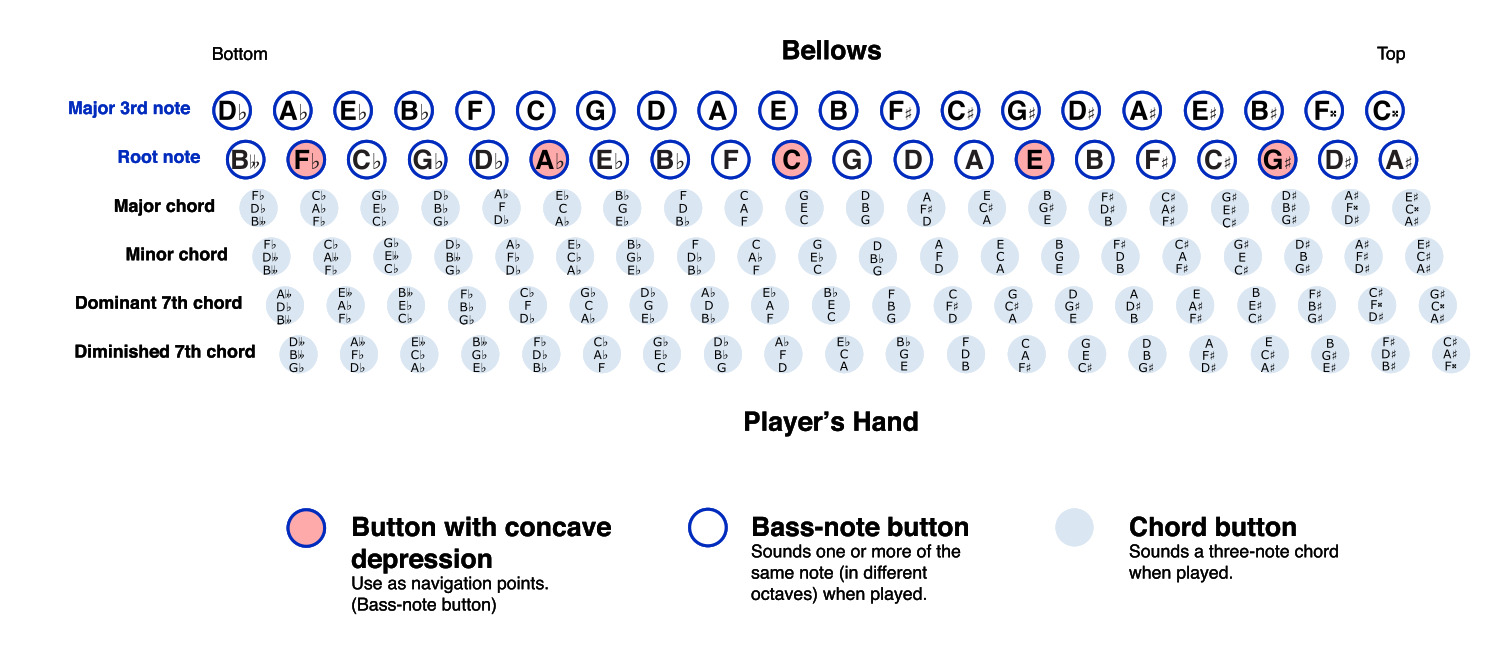Ninth Chords

Above image from https://en.wikipedia.org/wiki/Stradella_bass_system
The Stradella bass accordion can play a lot of chord types, but many are not all that obvious. In this article we will discuss the various “ninth chords”.
Ninth chords are notated with a single “9” following the pitch: A “C Nine” is written as “C9”. A ninth chord is formed by adding the ninth note in a scale to the specified chord. So, for a C9 we add D. Now, you fast learners out there might notice that the ninth is the same pitch as the second. Ahha, that is why you are a fast learner! However, it is expected that, in most situations, playing the second would result in something discordant ... but bumping it up by an octave results in something more pleasing.
Side note: By convention a 9th includes the dominant seventh. It is fairly common to omit the fifth, and we're not talking about just Stradella here. So, maybe we are on a modern track since our seventh chords don't include those tiresome fifths.
You can create a 9 by combining various chords. For example, for a C9 you can use:
- CM plus Gm,
- or 7M plus Gm,
- or Gm plus G dim.
What I do is emphasize the 9 as a bass note. To do this you have 2 options which nicely work with a major (C9: C, E, G, D), a minor (Cm9: C, Eb, G, D), a seventh (C, E, G, Bb and D), and even a major ninth (CM9: C E G B D). Remembering that for the notation “9” we are looking for a seventh chord with an added ninth and perhaps a missing fifth you can play a major chord, seventh (missing the 5), or M7 like you always do (see the relevant article in the left navigation panel) and add the 9 as part of the bass pattern. For C you need to add a D bass which is available as a bass note 2 columns up or in the contra-bass row 2 columns down. Deciding which finger to use is a bit of a head-scratch and really depends on what chord precedes this or which follows. Oh, and remember that you can nicely use the 5th finger to hit the counter-bass option.
Remember: With Stradella bass the pattern always remains the same. You don't need to worry about those nasty white and black keys like you would on a piano! The examples I use mostly refer to a C, but just move up and down the button board and nothing changes. Cool. And don't forget to refer to the illustration at the top of this page to see the relationships!
 |
This page was last modified on 2024-08-16 |